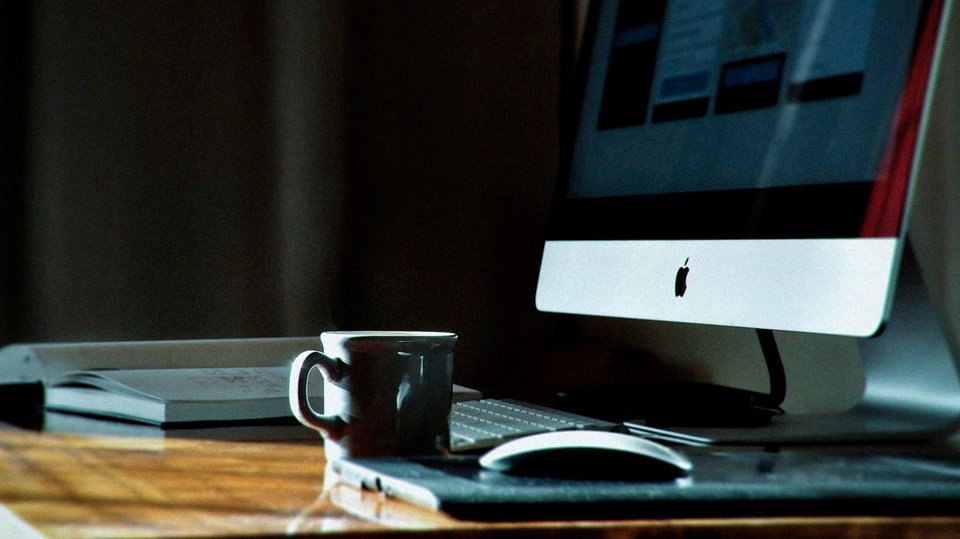Contents
The Productivity Equation
In his book, “Deep Work,” Cal Newport provides us with the productivity equation as follows:
Work Accomplished = Time Spend x Intensity
The amount of work you get done is dictated by how long you work for and at what intensity.
The more intense you work, the less time you have to work for. The less intense and more distracted you are, the more time you have to spend working.
This sounds simple and obvious, yet many people still prefer to multitask rather than work on a single task with more focus.
It is of vital importance that you understand in order to become more productive and achieve more in less time, multitasking is never an option.
With the productivity equation in mind, let’s take a look at the ways you can improve your productivity while working from home.
Set Up a Dedicated workspace
One of the many perks of working from home is the ability to work from your bedroom, or even in bed.
However, if you want to increase your productivity and get more done in less time, your bedroom is the last place you want to work. That is, of course, only when you have another option. We will also discuss what you can do if you must work in your bedroom.
The idea behind having a space dedicated to work is for you to get into the flow state as quickly as possible. Otherwise known as “in the zone.”
The flow state is the state of mind at which you are entirely absorbed in the task at hand, and ideas are flowing into your head nonstop. While you are in the flow state, your sense of time is skewed, and hours can pass without you noticing it.
That doesn’t mean you can only experience the flow state if you are doing something creative, as anyone from athletes to entrepreneur experiences flow.
*If your job is more mundane or administrative, you might benefit more from using the Pomodoro Technique (number 6).
While in the flow state, you will generally be able to get a lot more work done vs. shallow work. While it’s impossible to measure one’s productivity accurately, it’s safe to say that you can achieve twice as much while in a state of flow.
Eliminate Distractions
So to set up your workspace for maximizing your chances of getting into flow, the first thing to do is eliminate distractions.
There are mostly three types of distractions:
- Visual Distractions
- Audio Distractions
- Mental Distractions
Visual distractions can be having a TV playing in your field of view or something like having a Nintendo switch right there on your desk while you work.
Thus you must work in a space as clean as possible, with minimin visual distractions.
Many of us don’t have the luxury of having a dedicated room to work in, so somewhere like the dining table might have to do (if you have a laptop). But working in a place like the dining table means inevitable audio distractions, the solution here is simple.
Just put on some headphones and play music while you work, as long as you’re not listening to anything with lyrics.
If you only have earphones that don’t do a good job at blocking out noise, you could listen to a coffee shop background noise as it can blend in with the real-life sound of people talking or the TV.
You should also always put your phone on do not disturb mode while working, if you are waiting for an important phone call, you can always set that specific number to be unaffected by do not disturb mode.
*here’s a comprehensive list of music you can listen to while working
What about mental distractions?
You might be thinking, “that doesn’t make any sense! All distractions are mental distractions.”
While yes that is accurate, but what I mean here is that both audio and visual distractions will cause a “mental distraction”; while metal distraction can also come into existence on its own
An example of a mental distraction would be suddenly remembering you forgot to do something while working, and stopping your work to do that thing. Or wondering how many likes you’ve received on your recent Instagram post and stopping to check your phone.
To minimize the impact of these kinds of mental distractions, there are two things you could do:
1. Have some pen and paper ready so you can remind yourself to do something after you finish your work by writing it down
2. Set a hard rule for yourself that unless there is something that requires your urgent attention, you will not stop working until a set time
If you wish to increase focus or even eliminate mental distractions altogether, your best cause of action would be to start meditating (number 3).
Have Everything Ready At Hand
After you’ve eliminated distractions as much as possible, the next thing to do would be to make sure that you have everything you need for work ready to go.
Nothing takes you out of the flow state like having to go in another room and spending 5 minutes trying to find your laptop charger.
If you work early and know that other people in the house could be getting up and starting to make noise while you’re working, then have your headphones ready. Don’t wait till you’re distracted before going to grab them.
The idea is to minimize the number of times you have to come out of your flow state just to get something that you could have prepared beforehand.
Some common things you can get ready before starting to work includes:
- some water
- necessary chargers
- headphones
- pen and paper
The main problem with coming out of the flow state is that it could take anywhere from 10 to 45 minutes to get back into it. You decide if it’s worth it.
Therefore, you are better off spending twenty minutes setting up your work environment each day rather than getting to work straight away and getting distracted multiple times.
Create a Morning Routine
As Tim Ferriss likes to say, “Win the morning, win the day.”
It really is that simple.
Once you have a momentum going during the morning, you can get to work straight away and keep the momentum going for the rest of the day.
The ideal morning routine consists of whatever necessary steps you need to take before you are primed to start working.
Here’s an example of things to have in your morning routine:
- Meditation
- Some Light exercise, or a full-blown workout
- A Shower that ends with 30 seconds of cold water
- Some Reading while you have breakfast
- Making a todo list
Each of the actions mentioned above has a specific purpose of preparing yourself for the day.
Meditation is for improving mood and focus to maximize productivity.
Exercising has similar effects to meditation, with the added benefits of getting your heart pumping to kickstart your body and mind in the morning.
A cold shower or 30 seconds of cold water at the end of your shower, also increases your circulation. As well as reducing stress, boosting your immune response, and increasing your will power.
Whether breakfast is a part of your life of not, it’s a good idea to do some reading in the morning. 15 to 30 minutes would do. Reading can stimulate your brain, and further prepare it for the day ahead. It also helps with getting into the right mindset to be productive if you’re reading self-improvement books.
* here’s a reading list of perfect books to read in the morning
Making a todo list, specifically writing it down, can significantly increase the possibility of getting those things done. Much like writing your goals down makes it 40 percent more likely that you achieve them. Writing your todo list down has the same effect.
In general, your goal should be to get your morning routine down to less than an hour. If you take the example from above, this should be achievable.
10 minutes (meditations) + 15 minutes (exercise) + 10 minutes (cold shower) + 15 minutes (reading) + 5 minutes (todo list) = 55 minutes
Get Into a Daily Routine
The natural extension of a morning routine would be a daily routine.
As you probably have heard by now, willpower is like a muscle. It can be trained and strengthened, but at the end of the day, just like any other muscle, it will get tired.
Therefore, the most effective way of maximizing productivity would be to use willpower as little as possible.
“But how? How does one get much work done without tiring out the willpower muscle?”
By having a routine.
Because our brains are malleable and physically changes (neuroplasticity) based on our experiences, we can think of it as a muddy road.
When you chose to do something, it’s like driving a Jeep down the muddy road; The first time you drive through it, it leaves a shallow dent. The second time you drive through it, it makes the dent deeper.
The more times you drive through the muddy road, the deeper the dent gets; eventually, it becomes so deep that it’s almost impossible not to drive over the dent. A habit is formed.
The first time it’s difficult to keep straight on the road, but once the dent gets deeper and deeper, it becomes effortless.
This is just like using your willpower, without a routine, it takes a good amount of willpower to get to work; with a routine, it becomes second nature.
Haruki Murakami, the internationally successful Japanese writer, has written more than 30 books to date. His work has been translated into 50 languages and millions of copies sold in the US alone. When he was asked how does he write so much, he answered:
“I keep to a routine every day without variation. The repetition itself becomes the important thing; it’s a form of mesmerism. I mesmerize myself to reach a deeper state of mind.” – Haruki Murakami
You could even say that having a daily routine is the key to success.
Time-Blocking
With that in mind, let’s look at how you can build your own daily routine for maximizing productivity.
One of the more popular ways of building a routine is time-blocking, also known as Chunking.
If you have some work to do, instead of making it your goal to finish the job or complete a certain percentage, you would schedule to work on it for a set amount of time.
It is hard to stick to a daily routine when your goals are to do a certain amount of work each day; it’s much easier when your goals are to work for a certain amount of hours each day. A typical daily routine could look something like this:
After completing the morning routine, work intensely for 4 hours.
Have a lunch break and read for 30 minutes.
Do more shallow work (less intense) for 2 hours.
Do some light exercise.
Work Intensely for another hour.
Read/ Learn a skill for 2 hours.
Have dinner.
Watch Youtube/TV/play a video game for 2 hours.
Nightly routine.
As you can see, the routine above is time-based and wouldn’t change much regardless of what work you do. This is the kind of routine you want to create to maximize productivity if you work from home.
Once you sink into your daily routine, not much willpower will be required to start working each time.
One important note here is if you are currently not doing a lot of work and your goal is to work 8 hours a day or more, work up to it. Don’t start your routine with 8 hours of work a day if you’re currently doing 2; it will be hard to make it into a habit and more than likely to backfire.
Start adding more and more hours to it as the habit forms, feel free to take up to a week to build up to your ideal workload. You’re better off building up to it for a week than jumping straight into it and lasting three days before you go back to procrastinating.
Take Short Exercise Breaks
You can decide if you want to put this into your schedule or improvise when you want to take some short breaks.
Either way, taking short breaks is crucial if you want to achieve maximin productivity, especially if you work sitting down, which most of us do.
When you sit for a prolonged period of time, there will be a reduction of blood flow to your brain, which will decrease your focus and ability to perform at a high level.
On top of that, the average person can only focus on one thing for about 45 minutes. This is the same reason why classes in school and university lectures are generally never too much longer than 45 minutes.
The flow state seems to break this rule and allow us to focus for much longer. But it’s not every day you get to reach the flow state.
Therefore, since your brain gets less blood flow the longer you’re sitting, and you probably won’t truly focus for much longer than 45 minutes anyway; it’s a good idea to get up and get your blood flow going again every once in a while.
Personally, I set a timer on my phone so that every hour I get up and do some burpees to get my heart pumping and reset my focus. A lot of the time this can even be done without breaking flow.
You can choose what you want to do for these breaks, here’s a list of exercises that will get your heart pumping within a minute or two:
- Burpees
- Jumping Jacks
- High Knees
- High Jumps
- Shadow Boxing
In general, cardio and aerobic exercises are better than resistance exercises such as push-ups and squats. As resistance exercises tire your muscles but do not get your heart pumping as much. Although you can certainly add some resistance exercises to your short breaks as long as you also have cardio ones.
Create a Nightly Routine
Nightly Routines aren’t nearly as popular as morning routines, but they could be just as important.
The main point of nightly routines is to wrap up the day to get ready for bed and sometimes also prepare for the following day.
For example, instead of making your todo list in the morning, making it the night before is sometimes a better option. Also, if you like to run or workout in the morning, you could lay out your workout clothes before you go to bed.
In our Free 7 Stoic Exercises Guide, we’ve included nightly reflections as a part of a good nightly routine.
Nightly Reflections is the act of reflecting on your day and thinking about what you did right that day, as well as what you did wrong and what could be improved. The following quote is from the 7 Stoic Exercises guide:
“The act of self-reflection helps us see our own faults and what we lack in character. The point is not to harshly judge ourselves, but to see where we can improve and make it an effort not to repeat the same mistakes.”
If you are interested in learning more about Nightly Reflections or improving yourself as a person, you can get the free guide here:
Related Posts:
How To Make The Most Out of Work From Home
The Definitive Music List For Focus and Productivity
7 Proven Methods To Help You Beat Procrastination




























